Giving proper justice to the complex history and various conflicts that led to each act of civil disobedience would be unfeasible within such a limited space, we do not claim to attempt this feat. We fervently encourage you to delve into the narrative of political revolt and civil disobedience independently. Moreover, seek to discern where the boundary for justification or action on these matters lies within your own personal values, provided it exists in the first place.
To inspire and educate you, here are 25 Notable Political Rallies and Acts of Civil Disobedience.

The Boston Tea Party
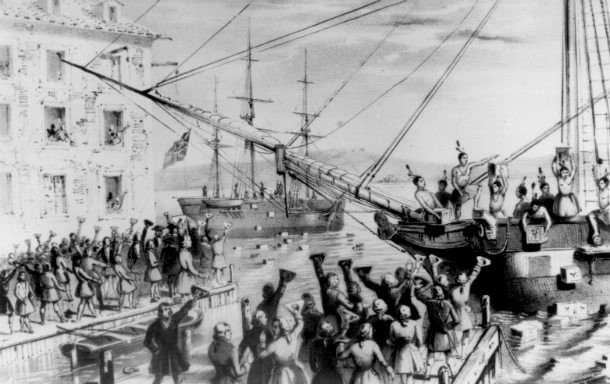 Source: Image Source: commons.wikimedia.org (public domain: author's life + 100 yrs)
Source: Image Source: commons.wikimedia.org (public domain: author's life + 100 yrs) On December 16th, 1773, a group of Colonists, dressed as Native Americans, snuck onto ships in Boston Harbor carrying Tea from England. This was to protest British Parliament’s Tea Act of 1773, which basically gave the East India Trading Co (which was starting to fail) complete control of the tea trade in the Americas, undercutting every other possible provider. Viewing this as further taxation without representation, the Colonists emptied the tea into the harbor, led by Sam Adams (yep, THAT Sam Adams). This became known as The Midnight Raid or more commonly The Boston Tea Party. This led to the British passing the Coercive Acts in 1774, which established British rule in Massachusetts, closed Boston Harbor, and made British officials immune to criminal charges in America. The Colonists responded by calling the first Continental Congress to oppose British rule in America. 60 guys, three tea ships, and now here we are.
Rosa Parks
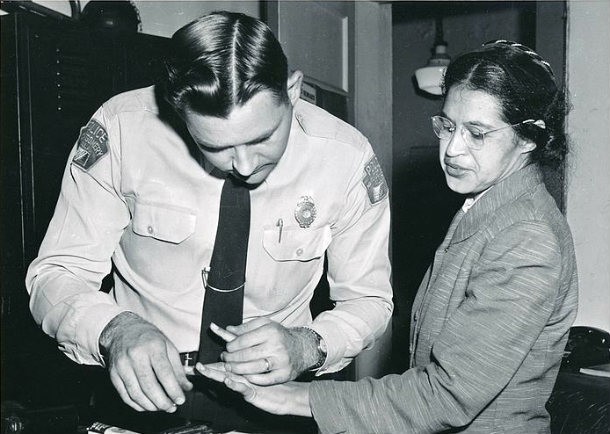 Source: http://www.history.com/ Image Source: commons.wikimedia.org (public domain - published between 1923-1977 w/o copyright)
Source: http://www.history.com/ Image Source: commons.wikimedia.org (public domain - published between 1923-1977 w/o copyright) In December of 1955, in Montgomery, Alabama, a woman named Rosa Parks refused to give up her seat on the bus to a white man. This was against the city’s segregation laws, and Parks was arrested. The local chapter of the NAACP planned a bus boycott for Monday, and this led to a 26 year old man, named Rev. Martin Luther King Jr, standing up in church that night saying, “The great glory of American democracy is the right to protest for right.”
Emily Davison
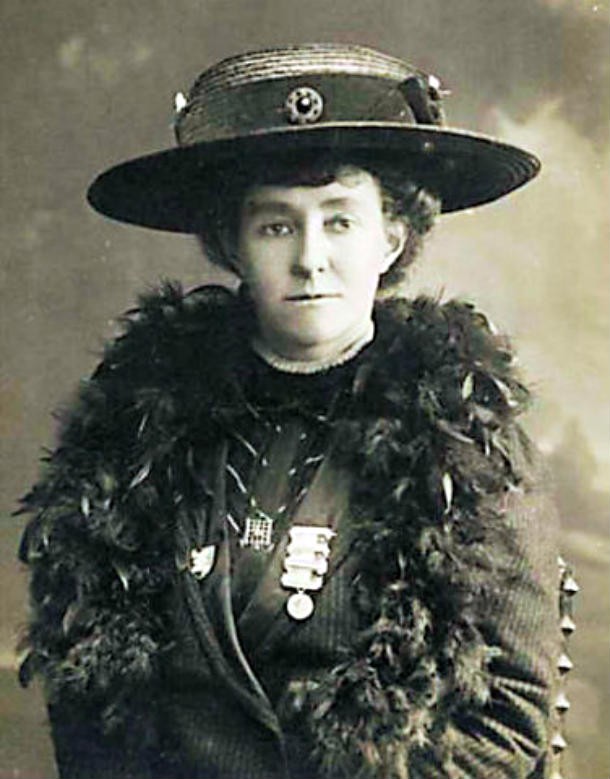 Source: https://en.wikipedia.org Image Source: en.wikipedia.org (public domain: author's life + 70 yrs)
Source: https://en.wikipedia.org Image Source: en.wikipedia.org (public domain: author's life + 70 yrs) In 1913, British Women’s Suffrage activist Emily Davison, who had been imprisoned nine times and force fed while she was on hunger strike, ran onto the track during the Epsom Derby and was trampled by King George’s Horse. She died from her injuries four days later, but as a result, men rallied to the cause and formed Northern Men’s Federation for Women’s Suffrage.
The March on Washington for Jobs and Freedom
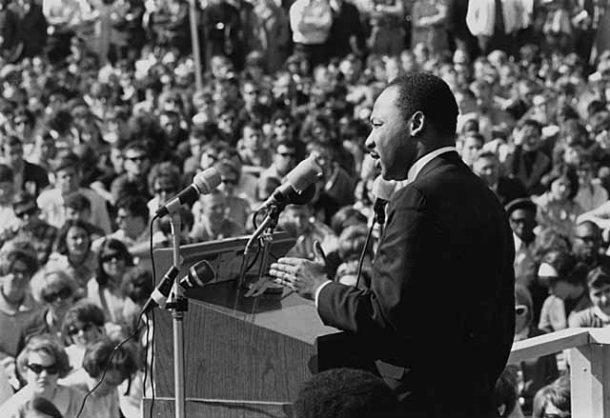 Source: http://time.com/
Source: http://time.com/ In 1963, The March on Washington for Jobs and Freedom had over 200,000 supporters marching on the Mall in Washington DC, pushing lawmakers to address racial inequalities. This is where Dr Martin Luther King Jr delivered the, “I Have A Dream” speech, and this March is credited with building the support needed to pass the Civil Rights Act of 1964 as well as the Voting Rights Act of 1965.
The March from Clerkenwell to Hyde Park
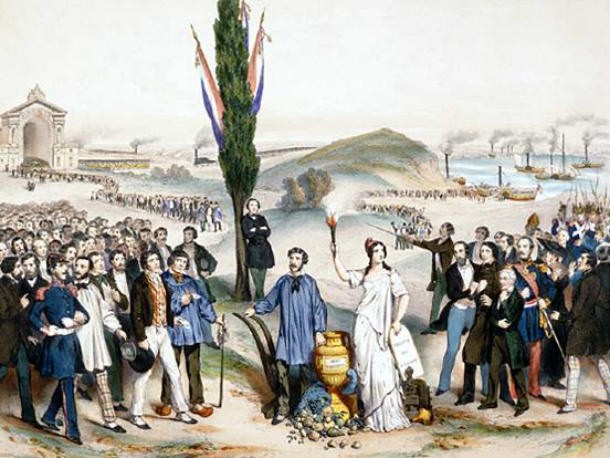 Source:http://www.counterfire.org/ Image Source: en.wikipedia.org (public domain: author's life + 100 yrs)
Source:http://www.counterfire.org/ Image Source: en.wikipedia.org (public domain: author's life + 100 yrs) On May 6th, 1867, working class people marched from Clerkenwell to Hyde Park in London, demanding the right to vote. The government had forbidden this march, stating it would interfere with people’s enjoyment of the park and endanger the public peace; however, the march was carried out anyway, and two weeks later legislation was amended that quadrupled the number of working class people allowed to vote.
Thích Quảng Đức
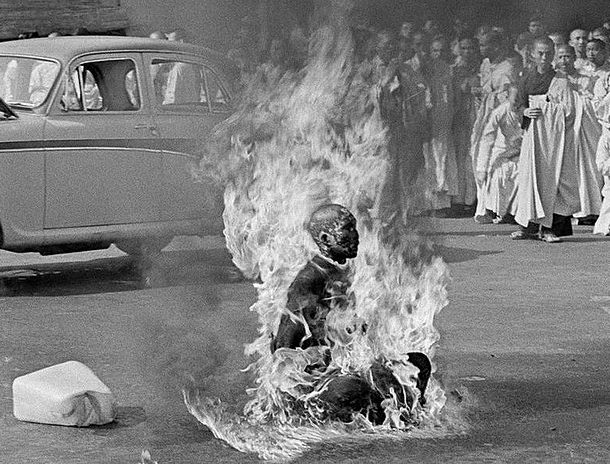 Source:https://www.one.org
Source:https://www.one.org In 1963, a monk in Vietnam named Thích Quảng Đức, in order to bring attention to the persecution of Buddhists in South Vietnam, set himself on fire and burned to death. The images of him burning – during which he maintained full composure – were seen around the world and caused allies of the Ngô Đình Diệm (the regime that was persecuting Buddhists) to reconsider their support. The images of the monk burning are still some of the most powerful in history.
Bread Riots & the Fall of the Bastille
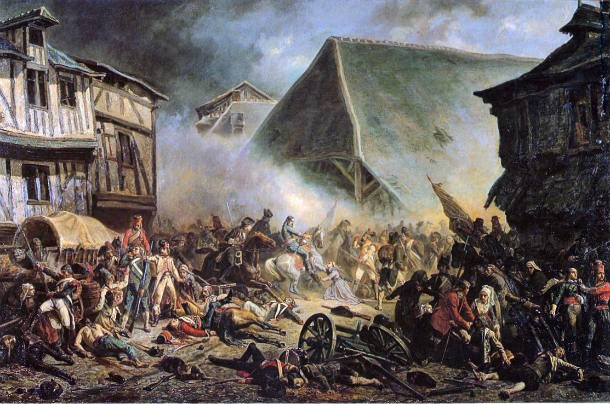 Source: http://www.ultimatehistoryproject.com/ Image Source: en.wikipedia.org (public domain: author's life + 100 yrs)
Source: http://www.ultimatehistoryproject.com/ Image Source: en.wikipedia.org (public domain: author's life + 100 yrs) There were many Bread Riots that, among other things, fanned the flames of unrest and eventually led to the Fall of the Bastille on 14 July 1789, which marked the early stages of the French Revolution. The peasant/working class lived on mostly bread made from rough grain, and between grain shortages and inflation, a loaf of bread cost about as much as a day’s wages, and they often found themselves hungry. Hungry citizens turned into mobs rioting outside bread lines and the palace of Versailles.
Cape Town Peace March
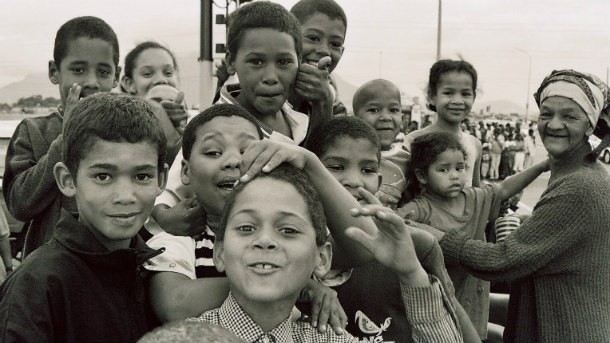 Source: https://ironline.american.edu/ Image Source: en.wikipedia.org (public domain)
Source: https://ironline.american.edu/ Image Source: en.wikipedia.org (public domain) In South Africa during apartheid rule, civil disobedience was commonly used to fight the government. In March of 1989, the Cape Town Peace March was organized by religious and political leaders (black and white), and since no police were present to apprehend protesters, remained peaceful and was considered a success. This encouraged further marches around the country, and months later Nelson Mandela was freed from prison.
February Revolution
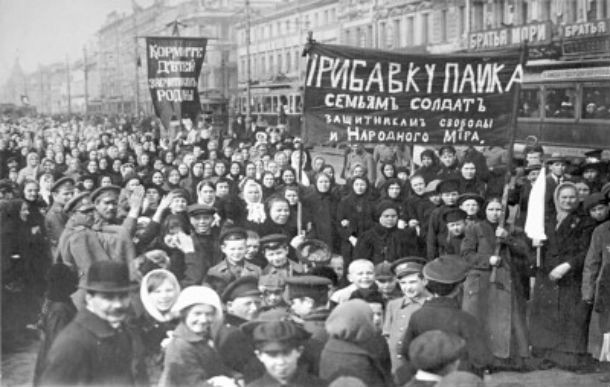 Spirce:http://www.counterfire.org/ Image Source: en.wikipedia.org (public domain: author's life + 70 yrs)
Spirce:http://www.counterfire.org/ Image Source: en.wikipedia.org (public domain: author's life + 70 yrs) In February 1917, in St. Petersburg, Russia, a demonstration started a wave of strikes known as the February Revolution. The protest was organized and carried out by women, most of whom worked in factories. The main point of their strike? Demanding bread. Three days after the strikes started, the Tsar of Russia was forced to abdicate the throne. This was the start of the Revolution of 1917.
Peaceful Protests in Ruhr, Germany
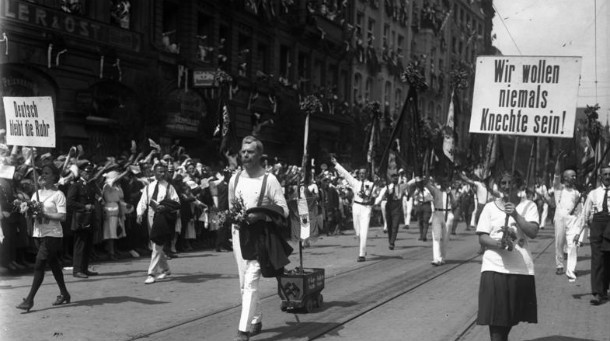 Source: https://en.wikipedia.org/
Source: https://en.wikipedia.org/ Between 1923 and 1925 (after WWI), France and Belgium occupied the German valley of Ruhr due to a failure to continue reparation payments after the war. The French were greeted by passive resistance including peaceful protests such as marches and civil disobedience. Eventually over years, sympathy for the Germans of Ruhr Valley increased, reparation payments were significant lowered, and the French and Belgians withdrew.
Orange Revolution
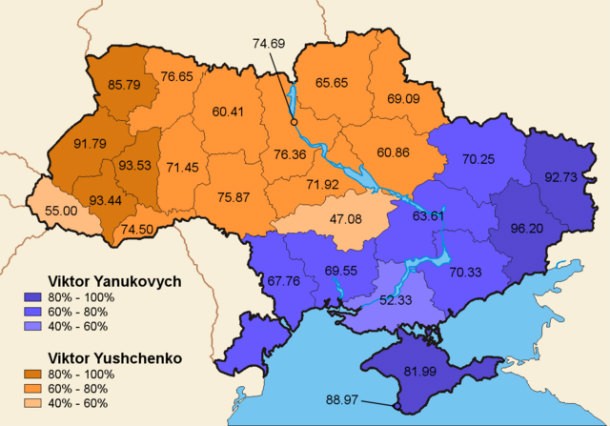 Source: https://en.wikipedia.org
Source: https://en.wikipedia.org Between November of 2004 and January of 2005, a series of protests called the Orange Revolution took place in the Ukraine following the 2004 election. The 2004 election had massive fraud, including corruption, voter intimidation, and just straight electoral fraud. A revote was actually held on December 26th, which is an amazing victory over a corrupt election by any standards.
Poll Tax Riots
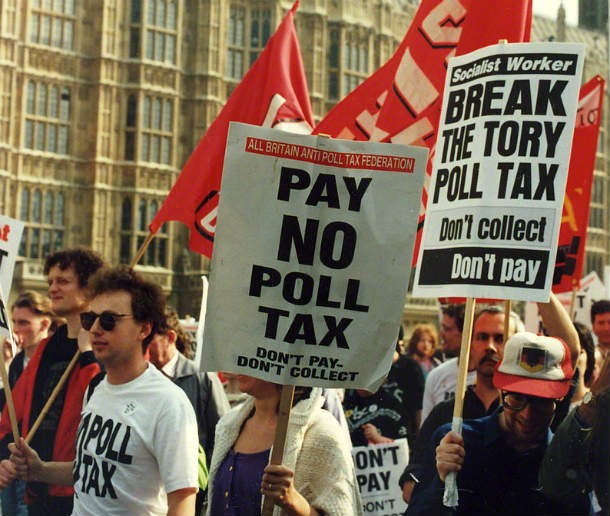 Source: https://en.wikipedia.org/
Source: https://en.wikipedia.org/ Poll Tax Riots in the UK started in 1990 after Prime Minister Margaret Thatcher introduced the Poll Tax. The largest protest was in London on March 31st, 1990. Many argue that this is a large part of what led to Margret Thatcher’s resignation in November of that same year. Two years later, the Poll Tax was replaced by the Counsel Tax.
Wat Tyler's Rebellion/the Peasant's Revolt
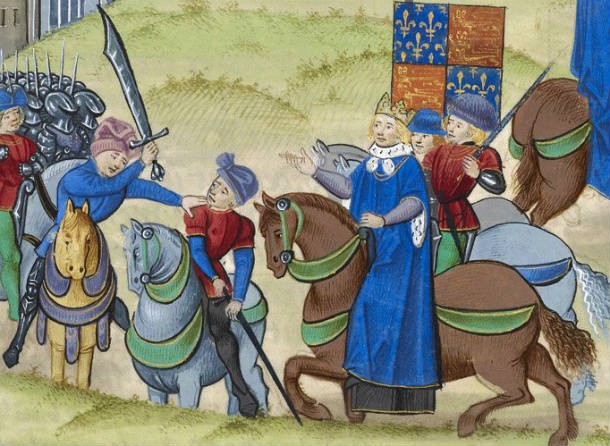 Source: http://www.wga.hu/ Image Source: de.wikipedia.org (public domain: author's life + 100 yrs)
Source: http://www.wga.hu/ Image Source: de.wikipedia.org (public domain: author's life + 100 yrs) Another Riot/Rebellion brought on by something called the Poll Tax was Wat Tyler’s rebellion in 1381, also known as the Peasant’s Revolt. England was in pretty bad shape from a socioeconomic standpoint after the Black Death wiped out a large portion of the population, resulting in a labor shortage, and levying additional tax on overworked people did not set well. It began in Essex in May, and by the time it reached London in June, things got bloody. Rioters murdered some Flemish merchants and burned down the Palace of the Duke of Lancaster. As a social and political revolution, the riot was a failure, but it did succeed in halting further taxes on the poor and working classes for a time.
The Fall of the Berlin Wall
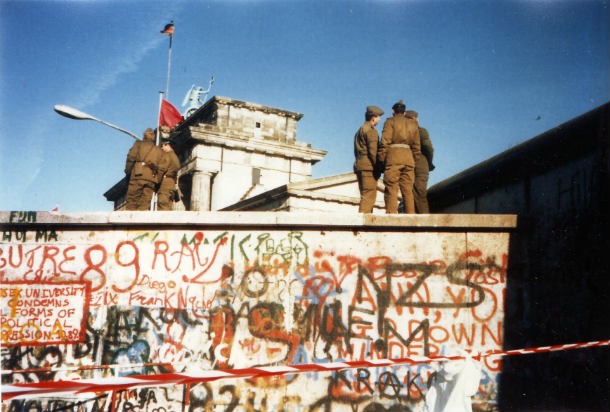 Source:http://allday.com/
Source:http://allday.com/ In 1961, a massive wall was built in the city of Berlin, Germany. This wall divided East Berlin (Communist Controlled) from West Berlin (non-Communist) and was built to keep the people of East Germany under Communist rule and prevent emigration to the West. On November 9th, 1989, it was mistakenly reported that Eastern Germans would be allowed to cross into Western Germany. A German Lieutenant named Harald Jaeger tried to appease the rowdiest of the crowd by letting some of them through the checkpoint he was guarding, but once people realized some had gotten through, the crowd only pushed harder. At nearly midnight, Jaeger defied orders and opened the checkpoint, and some 20,000 people went through. Citizens of Berlin started tearing the wall apart with pickaxes and even their bare hands, and soon cranes arrived to help take down the wall.
José Bové
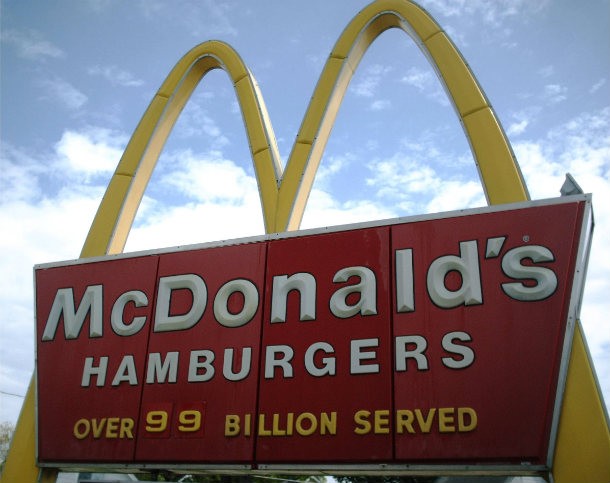 Source: http://www.dailygood.org/
Source: http://www.dailygood.org/ Protests are not always over Government. While McDonald’s has been welcomed into most countries worldwide, when the chain decided to open a store in Millau, France in 1999, they were met with opposition. José Bové, a member of the agricultural union and militant farmer, led his supporters to dismantle the building brick by brick before it was even fully built. Bové led several protests against Genetically Modified Foods and Junk Food entering the French Market and brought into the spotlight many other agricultural activists. Eventually, these activists became a significant part of the anti-capitalist movement.
The Battle of Michigan Avenue
 Source: http://www.history.com/
Source: http://www.history.com/ On August 28th, 1968, in Chicago, thousands of protesters convened outside the Democratic National Convention to protest the Vietnam War. This became a riot known as “The Battle of Michigan Avenue” and was caught on camera. Once shown on TV, people all over the country started coming out in opposition to the war in Vietnam, turning the tide of public opinion.
Singing Protests in the Baltics
 Source: http://infomory.com/
Source: http://infomory.com/ Music is powerful. Estonia, Lithuania, and Latvia had a series of powerful protests that were primarily singing: singing at organized times and protests, singing after curfew, singing for independence at officially sanctioned music festivals. Fifty years after Lithuania was incorporated into the Soviet Union, it became the first republic to declare its independence from the USSR in 1990.
Juan Manuel Sánchez Gordillo
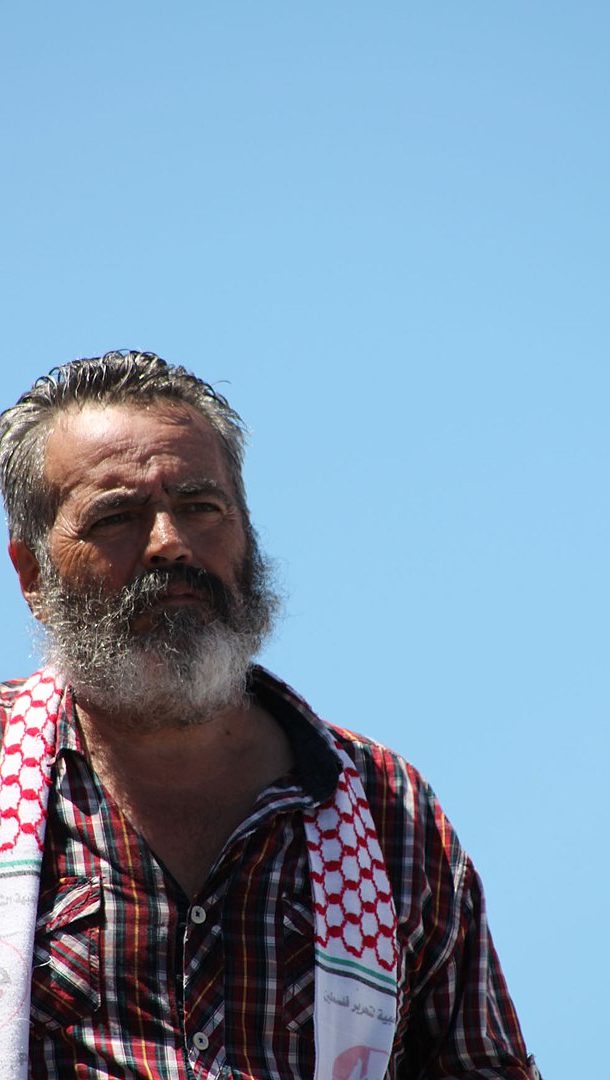 Source:https://www.theguardian.com
Source:https://www.theguardian.com In 2012 in the town of Marinaleda, Mayor Juan Manuel Sánchez Gordillo led local farmers on a supermarket sweep, raiding for food to feed local families who were going hungry due to Spain’s financial crisis. He had political immunity as an elected official and could not be arrested. The short and most important change in this is that hungry people were fed. He and the small Communist Utopia he governs, which has no police, continue to encourage others to resist large governments putting themselves over the people.
The Ides Of March (44 BC)
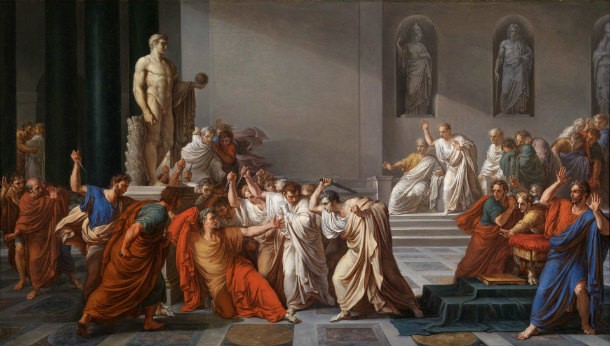 Source:https://en.wikipedia.org/ Image Source: en.wikipedia.org (public domain: author's life + 100 yrs)
Source:https://en.wikipedia.org/ Image Source: en.wikipedia.org (public domain: author's life + 100 yrs) The Ides Of March is the 15th of March on the Roman Calendar. It was on this day in 44 BC that Julius Cesar was stabbed by a group of Roman senators, including his close friend, Brutus. This event – the stabbing of Julius Cesar – started a Civil War that resulted in Julius Cesar’s heir Octavian (later known as Cesar Augustus, like from the bible when Jesus was born? That dude) rising to sole power. On the 4th anniversary of Cesar’s death, Octavian executed 300 knights and senators who had fought against him to avenge Cesar’s death. This was arguably the end of the Roman Republic and the start of the Roman Empire. Et Tu Brute?
South Central Riots/Rodney King Riots
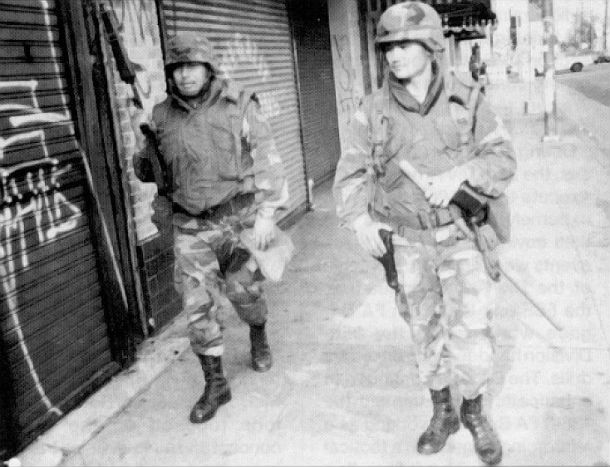 Source:http://www.npr.org/ Image Source: upload.wikimedia.org (public domain)
Source:http://www.npr.org/ Image Source: upload.wikimedia.org (public domain) 1992 saw several large scale riots that destroyed most of Korea-town (when the Koreans of Korea-town didn’t do…anything). Also known as the South Central Riots or the Rodney King Riots, they started because of a routine stop of a vehicle containing Rodney King and two passengers which led to a high speed chase after which King was arrested and excessive force was used. The cops were acquitted of any charges. The riots went on for six days, and there were killings, arson, looting, you name it.
Regardless, the cultural change was rather quite unexpected – Korean Americans marched the streets of LA, peacefully, a week after the riots in the largest Asian-American protest ever held in the city. A cultural movement centered around protecting Korean Americans and their rights was started; new leaders formed within communities; and today Korean American culture is a vibrant and important part of not only California, but the US as a whole. Being forced to endure the LA riots and the aftermath led to the empowerment and shaping of the identity of Korean American culture.
Liberia 2003
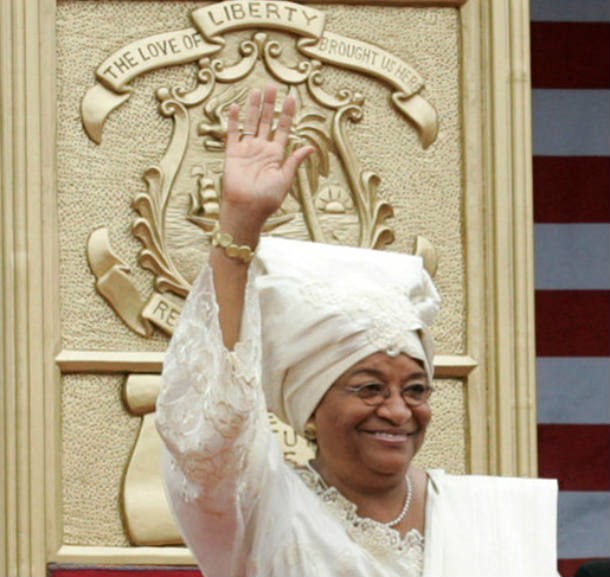 Source: http://www.yesmagazine.org/ Image Source: zh.wikipedia.org (public domain)
Source: http://www.yesmagazine.org/ Image Source: zh.wikipedia.org (public domain) Liberia, in 2003, was not a safe nation, nor was it a nation at peace. Peacefully founded in West Africa by Freed American Slaves, it had become a hotspot of violent rebels and equally violent drug militias who regularly raped and murdered innocent citizens going about their lives. A group of women had had enough of this, and decided to get the attention of the man – rebel turned president Charles Taylor – by sitting by the road his motorcade traveled down, every day, wearing white. Rain, shine, whatever, hundreds of woman sat, prayed, danced and sang. Eventually, they were noticed by the nation, and facing pressure from all sides, President Taylor invited the women for peace talks, which sadly, went nowhere.
Finally fed up that they had come so far, the women barricaded the delegates in the room and allowed no escape until a peace treaty was signed. President Taylor went into hiding, International Peacekeepers arrived and were greeted with cheers, and Libera had their first peacefully elected president, who was also Africa’s first female leader: Ellen Johnson-Sirleaf. Her comment at the end of conflict was, “It was ordinary Liberians who reclaimed the country and demanded peace.”
The Boxer Rebellion
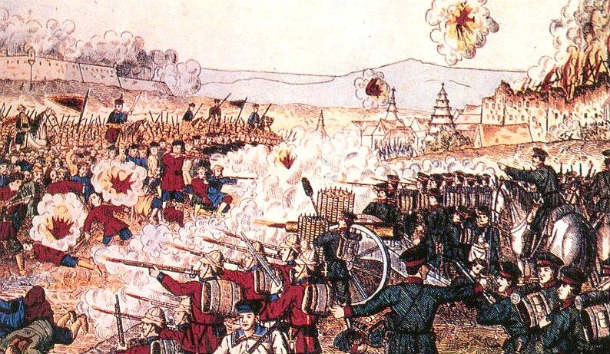 Source: http://www.history.com/ Image Source: commons.wikimedia.org (public domain; author's life + 70 yrs)
Source: http://www.history.com/ Image Source: commons.wikimedia.org (public domain; author's life + 70 yrs) In 1900, a group known as The Order of the Righteous and Harmonious Fists (called the “Boxers” by western culture because of their devotion to exercises they believed would stop bullets) in what would become known as The Boxer Rebellion, started killing all Christians they could find and destroying churches in and around Beijing. They believed that Christians and foreign nations were trying to take over China after the Quing Dynasty had lost several wars to both the West and Japan in the mid-1800’s.
After much bloodshed, the final result of the Rebellion was that China was forced to pay reparations to western powers for people killed during the Rebellion within China and were not allowed to import weapons for several years. Though not at all the change the Boxers wanted, this proved to be the downfall of the Quing Dynasty, China’s last great Dynasty. The change you seek with violence is not always the change you receive.
Protests Surrounding the Dakota Access Pipeline in North Dakota
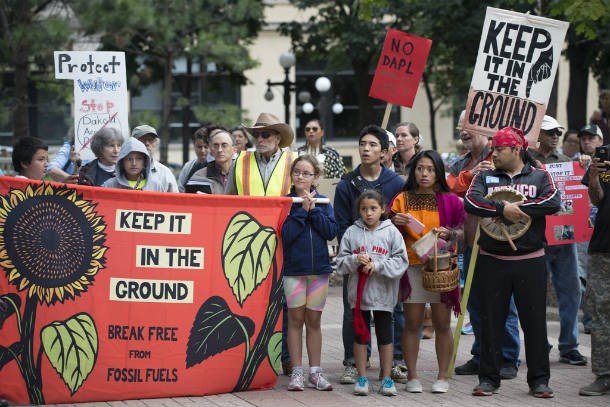 Source: http://www.dailykos.com/
Source: http://www.dailykos.com/ As of the writing of this list, thousands of Native Americans and other US citizens are actively protesting the Dakota Access Pipeline in North Dakota, a 30 inch diameter pipeline that would carry crude oil from North Dakota to Illinois for refinement. Over 300 people have been arrested and more are expected. The Keystone XL Pipeline was already a hot topic politically, but the protests have not only halted construction for the time being, they’ve raised awareness around the globe.
Salt Marches
 Source: http://www.history.com/ Image Source: upload.wikimedia.org (public domain: country of origin: India & published before 1989 w/o copyright)
Source: http://www.history.com/ Image Source: upload.wikimedia.org (public domain: country of origin: India & published before 1989 w/o copyright) On march 12, 1930, Mohandas Gandhi and 78 of his followers set out on an over 200 mile march from Sabarmati down to Dandi on the Arabian Sea. They were marching to protest the British Salt Acts, which prohibited any native Indians from collecting or selling salt, forcing them to pay high taxes on it (for context, when they did this with Tea in America we dumped it in the harbor). Along the march, thousands of people joined, and when Gandhi walked down to the beach to make and gather salt, thousands of others followed his lead, and other “salt marches” happened afterwards.
Tiananmen Square
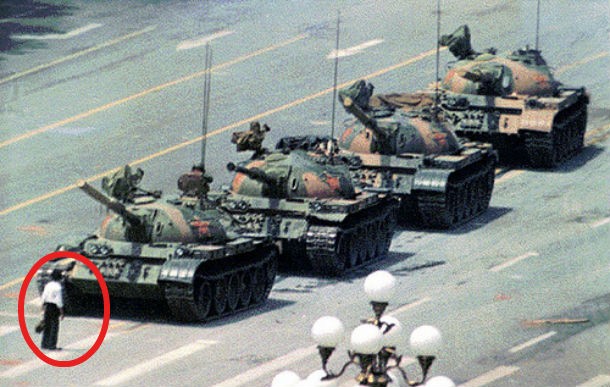 Source: http://www.martenscentre.eu
Source: http://www.martenscentre.eu Tiananmen Square, also known in China as the June Forth Incident, occurred in 1989. Students, seeing a more democratic and liberal government after the death of a leader of the Communist Party of China, had occupied Tiananmen Square for some seven weeks, and on June 4th, 1989, the Chinese government killed hundreds of them. Perhaps the most iconic image of this is the lone student standing in front of a line of tanks. While it’s arguable that the incident led to freer markets and more participation of the people in the political process, to this day, China condemns the protests and forbids all forms of discussion or remembrance. What you’re reading right now? You can’t see in China.
Photos: 22. Minnesota Historical Society via Flickr, 20. (Fair use) Malcolm Browne via Thich Quang Duc, 16. German Federal Archive/wikimedia commons, 15. User: Steschke/wikimedia commons, 14. James Bourne/wikimedia commons, 12. © Yann Forget / Wikimedia Commons /



























